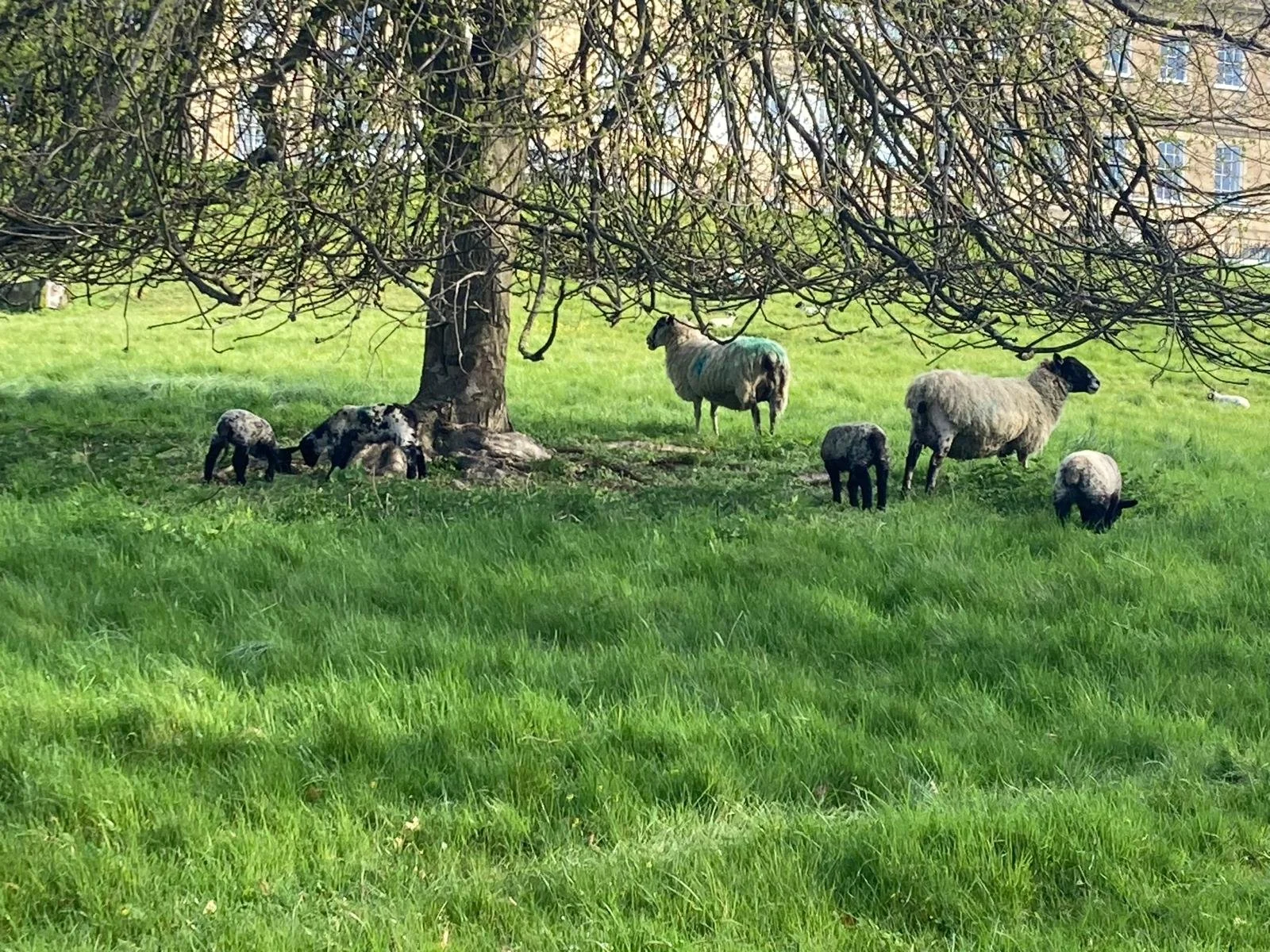Lansdown Crescent Sheep
Please note that, as the field is let, there is no access either for residents or for the general public.
The Sheep-Farming Year in our Field
The sheep spending part of the year in our field belong to farmer Douglas Creed from Kelston. He began using the field 28 years ago, so is very familiar with the practicalities of the site. The sheep are a cross-breed known as 'mule'; the ewes are mated with Suffolk rams and the lambs are therefore Suffolk mule cross.
The reproduction cycle began last November 23rd when three Suffolk rams were introduced into the field of ewes at the farm for 'tupping', i.e. mating. The menstrual cycle of the ewes is three weeks, so the rams know from urine when the ewes are individually in season. A blend of oil and dye is rubbed onto the belly of each ram so that, when mating is concluded, oily colour is left on the backs of the ewes to show that they have been mated. The colour is changed after three weeks to show that the last of the ewes to be mated will be later in lambing.
Mating to birth is a remarkably accurate 147 days, so we can predict that lambing will begin on April 19th and last just over 3 weeks. Some sheep farmers start the process earlier, but by mid April the grass and its nutrition should be ideal. It is important that the grass is no higher than 5"-6"; shorter grass is sweeter and better for milk production for the lambs.
Once born, single lambs rather than twins (who need slightly longer at the farm) and their mothers can be moved to our field, hence the precision about dates. The lambs are capable of squeezing through the railings onto the road, but, if frightened, hurriedly return to their mothers, who call alarmingly.
The ewes and lambs remain in the field as long as the grass is suitable. It may be that half of the flock are moved to another field to give the remainder longer in our field, depending upon grass growth and the weather. When the grass is munched down, they have to be moved elsewhere. The ewes also have to return to the farm for shearing; the timing of this depends upon contractors' availability.
In late Summer/Autumn, the ewes, now parted from their lambs, can return to our field. They are no longer producing milk, so can be left with taller/stringier grass, "gut fill", until our field is munched down ready for Winter. Their browse gives the field time to recover and be cleansed by the Winter rains.
In the lower part of the field, you may notice a large white plastic tub which the sheep, when present, cluster around. This is a cereal-based compound enriched with molasses and minerals to supplement the grassy diet.
Mr Creed uses no pesticides or growth promoters on the grass, and only resorts to antibiotics in life-threatening situations. The sheep are checked upon very regularly, but in case of any emergency the person to contact first is Email
Latest Sheep Update, August 2019
Our sheep farmer, Mr Creed from Kelston, will be bringing ewes to the field in the next few days to munch down the grass in the field and give us much visual pleasure. These will be weaned ewes which will stay in the crescent until they need to return for tupping, sometime towards the end of October if the grass lasts that long.
In the event of any animal needing medical intervention Mr Creed will come from Kelston promptly to ensure they survive. Please contact Email rather than Mr Creed.
Peter Maguire has kindly continued to scythe down the nettles regularly, in the traditional way to stop them from seeding. The LCA Committee feels that use of weedkiller on the nettles is unacceptable.
And finally ...
We are not the only ones with sheep in an urban setting! Spotted at a reading of Dylan Thomas' poetry in Fitzroy Square, London, October 2014










